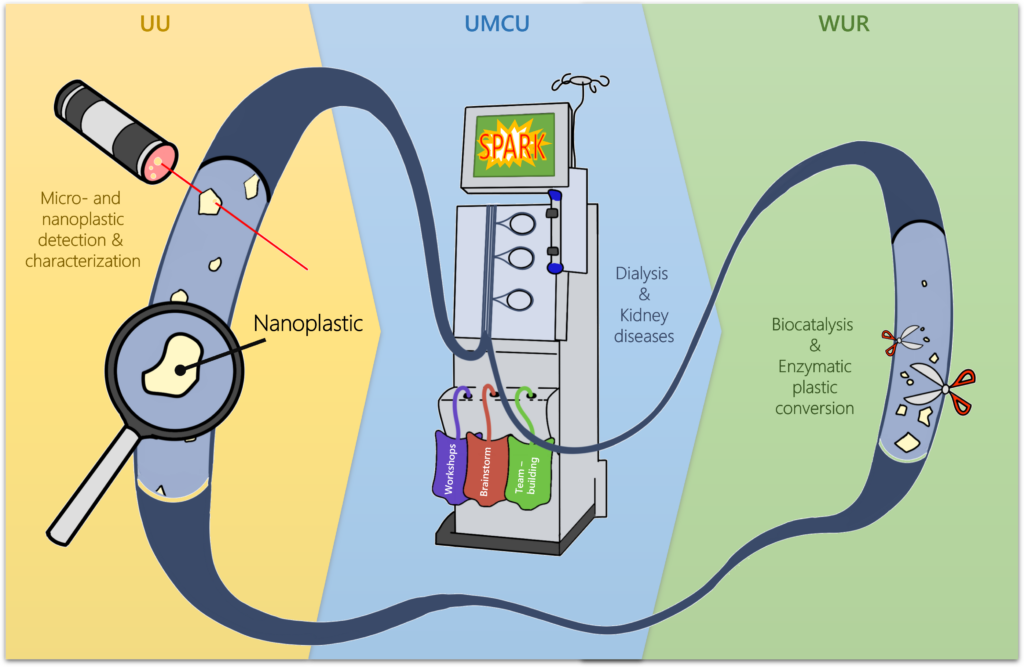In this project, researchers from WUR, UMCU and UU combine knowledge and forces to study the origin and fate of nanoplastics from dialysis machines, and explore a potential solution to nanoplastic presence utilizing bio-catalysis.

The figure above schematically represents both the research idea that sparked, as well as the connecting expertises, and planned input to build-up our interdisciplinary research consortium for the future centering around this research theme.
First the research idea: the dialysis machine is central. This tool, essential for people having kidney failure, is the main target for our interdisciplinary research question. The expertise for kidney diseases and the dialysis treatment lay at UMCU, in the center. However, as said, tubing is made from PVC or silicons. To see if micro- or nanoplastics are generated, micro-spectroscopic techniques will be applied. This expertise comes from UU, and is on the left as this will be the first step in the research: determining the problem and challenges. As the dialysis line progresses, we go towards the future; towards solutions; and hence towards the right of the figure, in which enzymes will be used as biocatalysts to convert the found particles in non-harmful substances. This is the expertise of WUR.
The schematically represented dialysis machine does not only connect the different expertise and institutions; it is fed by the input for a strong interdisciplinary collaboration as explained above in Section 3. This input will be e.g. workshops on interdisciplinarity, brainstorm, synthesis and reflection sessions, and real-life coming togethers for team-building and bonding.
Clearly, as this dialysis machine connects the institutes, expertise and is fed by a strong feedstock, the display irradiates brightly showing a SPARK!
Team members
Laurens Mandemaker (UU)
Robin Vernooij (UMCU)
Daan van Vliet (WUR)